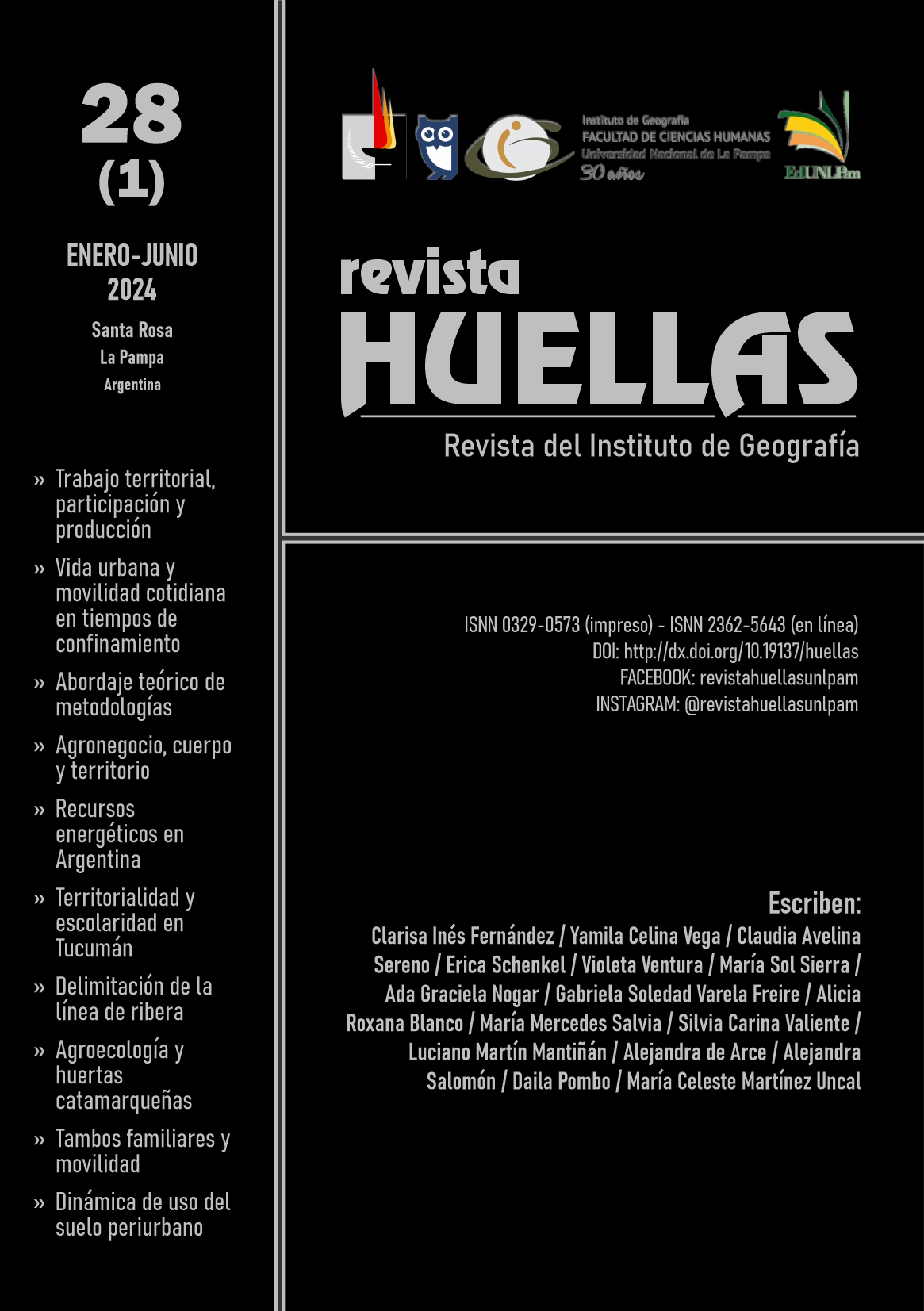Between the media, justice and the street: strategies of stallholders in the western Pampas against the advance of agribusiness (2005-2022)
DOI:
https://doi.org/10.19137/huellas-2023-2814Abstract
This thesis studies survival strategies put into practice by three local families from the west of the province of La Pampa (Argentina) to persist in the territory in a context of the advance of agrarian capitalism and disputes over natural resources. Through a Bourdian approach to strategies, we applied a qualitative research methodology to three emblematic cases, based on the technique of life stories and case studies, triangulated with documentary sources, to analyze the actions they launched from their practical sense, their ability to move, act and orient themselves in an adverse social field. The conclusions of the research showed that the laying families simultaneously put into play a combination of social reproduction strategies – beyond the economic ones – to preserve their social capital. That is, symbolic strategies, through the mediatization of the conflict; social, with mobilizations and assemblies; and succession and judicial, from the attachment to the land.
Downloads
References
Comerci, M. E (2018). Estrategias en espacios de borde. Colección de Libros Académicos de Interés Regional. EDUNLPAM, Santa Rosa.
Haesbaert, R. (2004). O mito da desterritorializacao. Bertrand Brasil. Rio De Janeiro. Traducción Aichino Lucia, Universidad Nacional de Córdoba, Córdoba.
Mançano Fernandes, B. (2010). Acerca de la tipología de los Territorios, Defensa comunitaria del territorio en la zona central de México. En Enfoques teóricos y análisis de experiencias. Carlos A. Rodríguez Wallenius (Coordinador), Juan Pablos Editores, México.
Downloads
Published
Versions
- 2024-05-02 (2)
- 2024-05-02 (1)










.png)












3.jpg)


